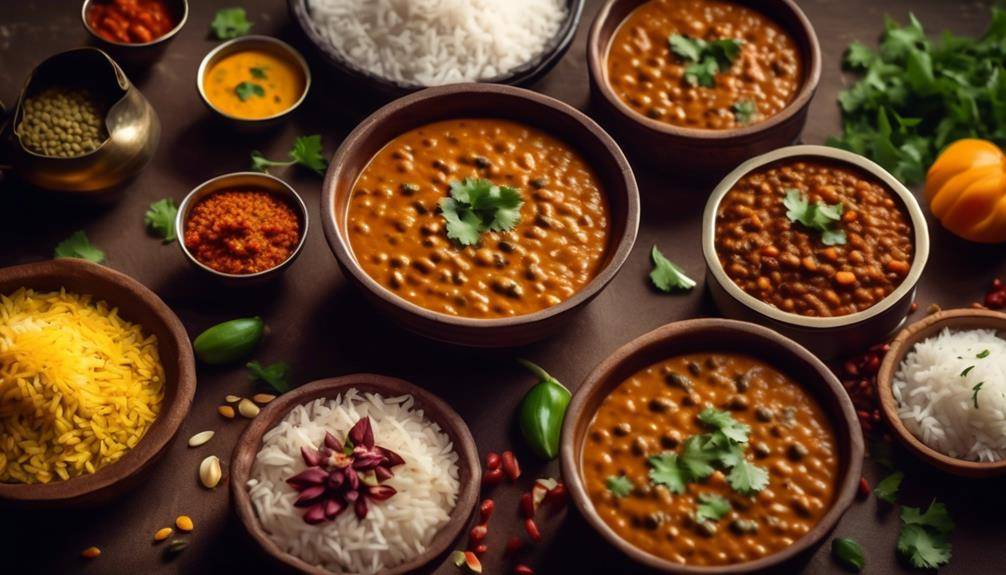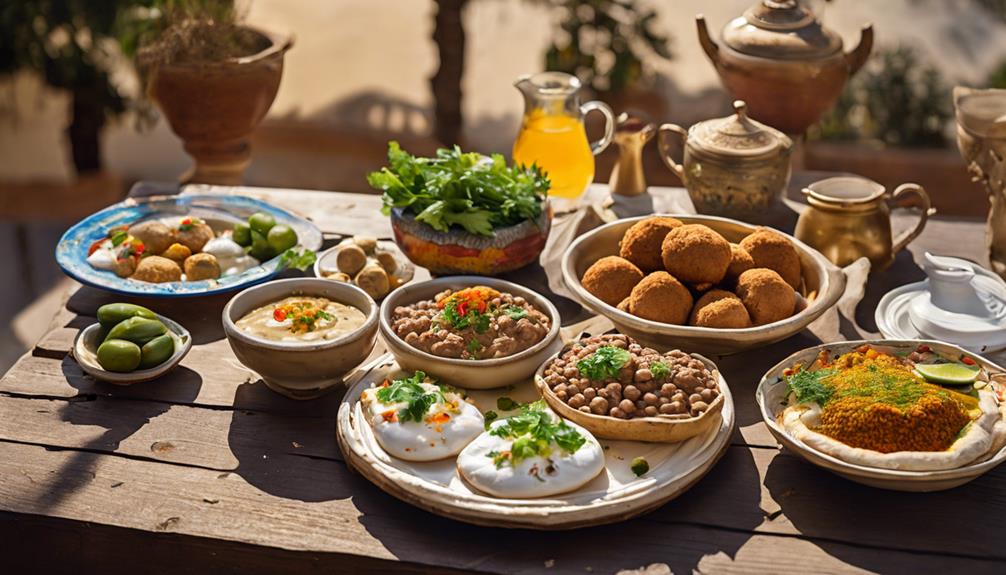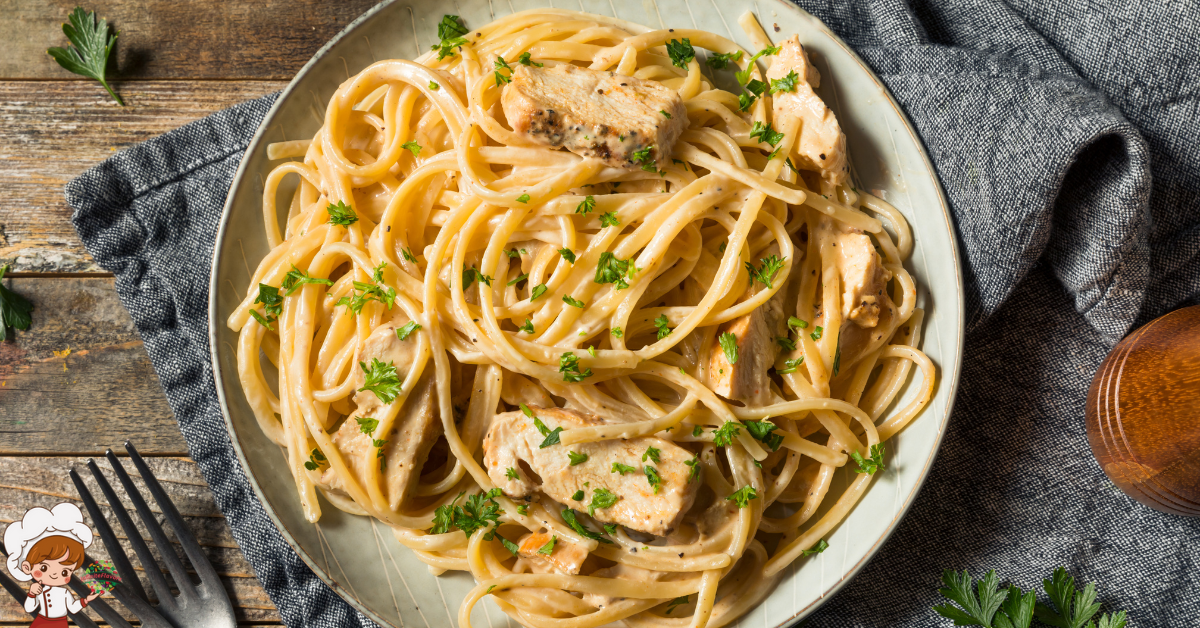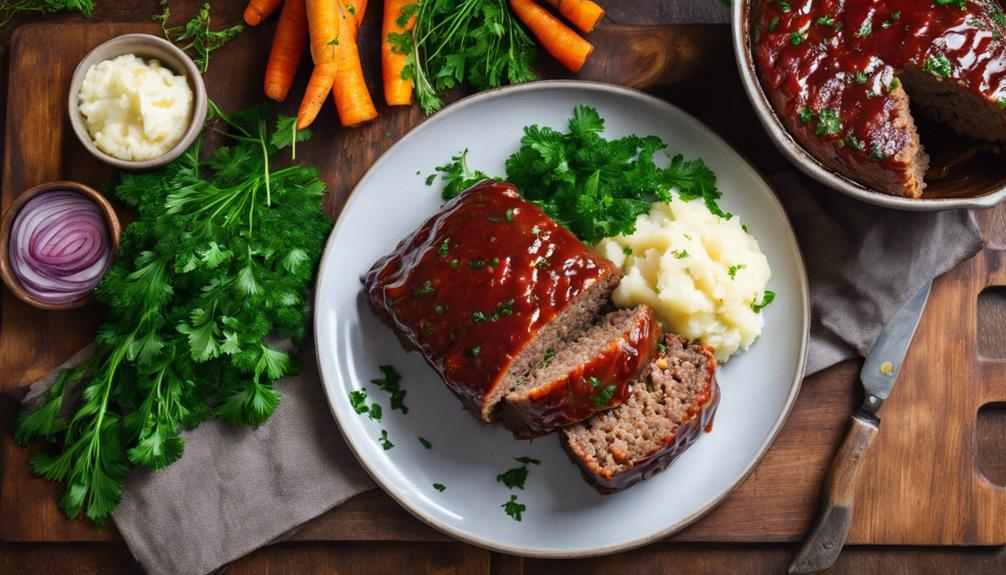Popular Traditional Creole Desserts And Pastries
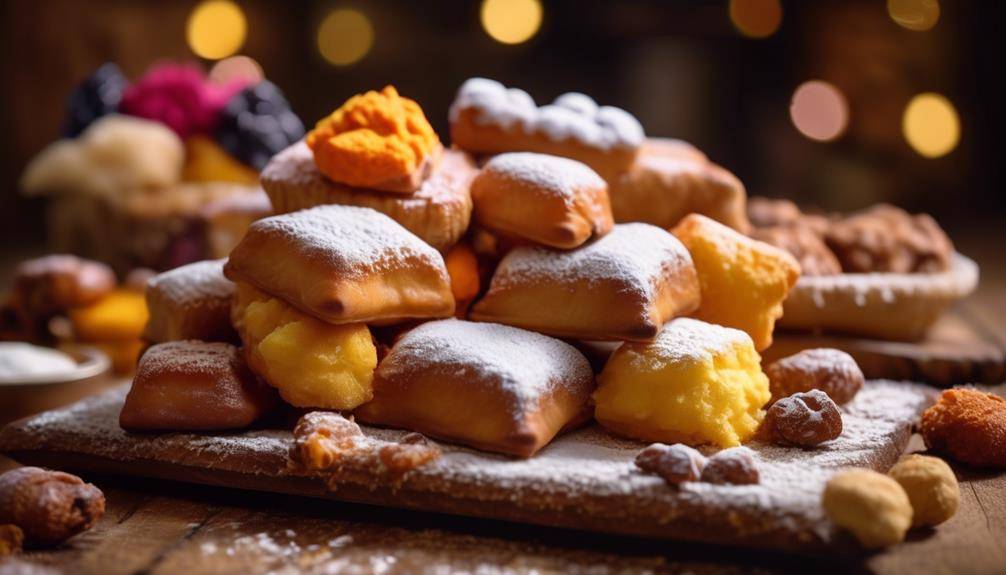
Traditional Creole Desserts And Pastries; Imagine stepping into a quaint Creole bakery, the air filled with a tantalizing aroma of freshly baked pastries. As you gaze upon the display case, your eyes are drawn to an array of vibrant desserts, each one more tempting than the last. From the delicate layers of a Gateau Basque to the gooey sweetness of a Pecan Pie, traditional Creole desserts and pastries offer a glimpse into the rich culinary heritage of the region. But there is so much more to discover beyond these delectable treats, as each dessert tells a unique story and holds a special place in the hearts of those who savor them. So, what other culinary delights await?
Beignets: A Classic Creole Delight
Beignets, a classic Creole delight, are a delectable treat that will transport you to the vibrant streets of New Orleans with their crispy exterior, pillowy interior, and irresistible powdered sugar coating. These fried pastries have a rich history and are a beloved part of Creole cuisine. The word “beignet” itself means “fritter” in French, and these delicious treats have been enjoyed for centuries.
The history of beignets can be traced back to the French settlers who arrived in New Orleans in the 18th century. They brought with them their culinary traditions, including the art of making beignets. Over time, the recipe for the beignet evolved to incorporate local ingredients and flavors, resulting in the unique Creole version that we know today.
Traditional beignet recipes typically consist of a simple dough made from flour, sugar, eggs, milk, and yeast. The dough is mixed together and left to rise before being cut into squares or circles and deep-fried until golden brown. The frying process gives the beignets their crispiness, while the yeast creates a light and fluffy interior.
Once the beignets are cooked, they are traditionally dusted with a generous coating of powdered sugar. This sweet topping adds a delightful sweetness and a touch of elegance to the beignets. It is common to enjoy beignets with a cup of café au lait, a traditional New Orleans-style coffee.
Whether you make them at home or enjoy them at a café in New Orleans, beignets are a true taste of Creole cuisine. Their history and delicious flavors make them a must-try for anyone looking to experience the rich culinary heritage of New Orleans. So indulge yourself in these irresistible treats and savor the flavors of the vibrant streets of New Orleans.
King Cake: A Festive Mardi Gras Tradition
Now let’s explore the rich history and delicious flavors of King Cake, a beloved tradition during Mardi Gras. This festive dessert, with its origins in French and Spanish cultures, is a sweet and indulgent treat enjoyed by many. Made with a rich dough and filled with various sweet fillings like cinnamon, cream cheese, or fruit, King Cake is often topped with colorful icing and sprinkles, symbolizing the festive spirit of Mardi Gras. Throughout the years, King Cake has also become associated with fun traditions, such as hiding a small plastic baby inside the cake, with the lucky person who finds it being crowned king or queen for the day.
History of King Cake
The history of King Cake, a beloved and festive Mardi Gras tradition, intertwines with the rich cultural heritage of the Creole community, revealing its deep roots and significance in New Orleans’ culinary landscape. This iconic pastry holds a special place in the history of Mardi Gras, a celebration dating back to ancient times.
- Mardi Gras, meaning “Fat Tuesday” in French, marks the final day of indulgence before the start of Lent. It originated in medieval Europe and was brought to Louisiana by French settlers.
- The cultural significance of King Cake lies in its association with the Epiphany, also known as Twelfth Night, which commemorates the visit of the three wise men to the baby Jesus. The cake is often baked with a hidden trinket or figurine, symbolizing the baby Jesus, and the person who finds it is believed to have good luck and blessings for the year.
King Cake not only satisfies the taste buds but also connects the present to the past, highlighting the enduring traditions and cultural heritage of the Creole community. Its history and cultural significance add to the charm and allure of Mardi Gras festivities in New Orleans.
Ingredients and Flavors
With a wide array of ingredients and flavors, King Cake truly captures the essence of the festive Mardi Gras tradition. When it comes to traditional Creole spice blends, cinnamon, nutmeg, and allspice are commonly used to add warmth and depth to the cake. These spices not only enhance the flavor, but also create a nostalgic aroma that fills the air during Mardi Gras celebrations.
Another popular trend in Creole desserts is the infusion of tropical fruits. From pineapple and mango to passion fruit and coconut, these fruits bring a burst of freshness and sweetness to the King Cake. The combination of the rich spices and vibrant tropical fruits creates a harmonious balance that tantalizes the taste buds and adds a unique twist to this beloved dessert.
King Cake Traditions
As we delve into the traditions surrounding King Cake, we discover the rich cultural significance and festive customs that make this dessert a beloved symbol of Mardi Gras celebrations. The King Cake holds deep symbolism in its design and ingredients, representing the three wise men who visited baby Jesus. Its circular shape symbolizes the unity and endless cycle of life.
The vibrant colors of purple, green, and gold used to decorate the cake represent justice, faith, and power respectively, paying homage to the Mardi Gras tradition. King Cake recipes vary, but they typically consist of a sweet yeast dough filled with a range of delicious fillings such as cinnamon, cream cheese, or fruit. The cake is often topped with a sugary glaze and sprinkled with colored sugars. Each slice of King Cake hides a tiny plastic baby, and the person who finds it is believed to have good luck and is responsible for hosting the next Mardi Gras celebration.
Bananas Foster: A Flambéed Dessert Favorite
Bananas Foster is a beloved Creole dessert that is known for its flambéed presentation. This technique involves igniting the rum sauce to create a dramatic and delicious dessert experience. Variations of Bananas Foster can include adding spices like cinnamon or nutmeg, or even incorporating different fruits like peaches or apples.
Flambé Technique Explained
The flambé technique, known for its captivating display of flames and rich flavor enhancement, has become a beloved favorite among dessert enthusiasts. It not only adds drama and excitement to the dining experience but also imparts a unique taste to the dish. To ensure safety while performing the flambé technique, it is important to follow certain precautions:
- Keep a fire extinguisher nearby.
- Use a long-handled lighter or matchstick to ignite the alcohol.
- Stand back and avoid leaning over the dish while igniting it.
- Be cautious of loose clothing or long hair that may catch fire.
While Bananas Foster is a popular flambéed dessert in Creole cuisine, this technique is also used in various traditional dishes from other cuisines:
- Crêpes Suzette from French cuisine.
- Cherries Jubilee from British cuisine.
These dishes showcase the versatility and artistry of the flambé technique, making it a culinary spectacle that never fails to impress.
Variations of Bananas Foster
With a wide range of delicious variations to choose from, the flambéed dessert favorite, Bananas Foster, offers a tantalizing array of options for dessert enthusiasts. This traditional Creole dessert is known for its rich, caramelized flavors and indulgent presentation. While the classic recipe calls for bananas sautéed in butter and brown sugar, and then flambéed with rum, there are numerous ways to put a unique spin on this beloved dish.
Some variations include adding cinnamon or nutmeg for an extra touch of warmth, incorporating pecans or walnuts for added crunch, or even substituting the rum with bourbon or brandy for a different flavor profile. Whether you prefer a traditional approach or a creative twist, the variations of Bananas Foster are sure to delight your taste buds and satisfy your sweet tooth.
Bread Pudding: A Comforting Creole Classic
What makes bread pudding such a beloved Creole classic? Bread pudding has a rich history in Creole cuisine, dating back to the early 18th century. It was a way for resourceful cooks to use up stale bread, transforming it into a delectable dessert. Over the years, bread pudding has become a staple in Creole households and has evolved to include various delicious variations.
Here are two sub-lists that highlight the reasons why bread pudding holds a special place in Creole culture:
Historical Significance:
- Bread pudding has its roots in the frugal practices of early Creole settlers. They would not let any food go to waste, and stale bread was no exception. By soaking the bread in a custard mixture and baking it, they were able to create a comforting and satisfying dessert.
- The practice of making bread pudding has been passed down through generations, preserving this culinary tradition. It is a reminder of the resourcefulness and ingenuity of Creole cooks in making the most out of limited ingredients.
Variations and Adaptations:
- Creole bread pudding typically includes ingredients such as eggs, milk, sugar, and vanilla, which create a creamy custard base. However, there are countless variations that incorporate additional flavors and ingredients. Some popular variations include adding rum-soaked raisins, chocolate chips, or even a splash of bourbon.
- Bread pudding can also be served with a variety of sauces, such as whiskey sauce, caramel sauce, or a classic vanilla sauce. These sauces add an extra layer of decadence and enhance the flavors of the bread pudding.
Bread pudding’s rich history and its ability to be adapted to various flavors and ingredients are what make it such a beloved Creole classic. It is a testament to the resourcefulness and creativity of Creole cuisine, and a comforting dessert that continues to bring joy to many.
Pralines: Sweet and Nutty Confections
Now let’s dig into the fascinating world of pralines. These sweet and nutty confections have a rich history that dates back centuries. We’ll explore the origins of pralines, the key ingredients that give them their distinctive flavor and texture, and the various variations that have emerged over time. Get ready to satisfy your sweet tooth and discover the delightful world of pralines.
Praline History
The history of pralines, those sweet and nutty confections, is a fascinating tale of culinary innovation and cultural influence. Pralines have a rich history that dates back to the 17th century. Here are some interesting facts about the history of pralines:
- Praline recipes originated in France, specifically in the region of Brittany. They were initially made with almonds and caramelized sugar.
- The French brought their praline making techniques to the New World, specifically to the French colony of Louisiana.
- In Louisiana, pecans were readily available, so they became the nut of choice for pralines.
- Over time, the recipe for pralines evolved to include ingredients like cream, butter, and vanilla, giving them a distinct creamy texture.
- Today, pralines are synonymous with Creole cuisine and are a beloved treat in the South.
The history of pralines showcases the blending of different culinary traditions and the creativity of chefs throughout the years.
Praline Ingredients
Praline ingredients play a crucial role in creating the sweet and nutty confections that are loved by many. When it comes to praline recipes, a few key ingredients are essential. First and foremost, you will need sugar, which forms the base of the praline. Brown sugar is often preferred for its rich flavor, but white sugar works just as well. Next, you will need nuts, typically pecans or almonds. These add a delightful crunch and nutty taste to the praline. Other ingredients include butter, vanilla extract, and a pinch of salt to enhance the flavors.
The technique of making pralines involves melting the sugar and butter together, then adding the nuts and other ingredients. The mixture is then poured onto a greased surface and left to cool and harden. By carefully selecting and combining these ingredients, you can create the perfect praline that will satisfy any sweet tooth.
Praline Variations
To explore the wide range of flavors and textures that can be achieved with pralines, let’s dive into the world of praline variations. There are countless ways to add a twist to the classic praline recipe, resulting in unique and delicious desserts. Here are some variations to consider:
- Flavored Pralines:
- Chocolate: Adding cocoa powder or melted chocolate to the praline mixture creates a rich and indulgent treat.
- Fruit: Incorporating dried fruit, such as cranberries or apricots, adds a burst of natural sweetness and a chewy texture.
- Praline Desserts from Other Cultures:
- Mexican Cajeta: Similar to pralines, Cajeta is a caramel sauce made from goat’s milk. It can be drizzled over desserts or used as a filling.
- Italian Torrone: This nougat-like candy is often made with almonds and honey, resulting in a crunchy and fragrant confection.
These variations showcase the versatility of pralines and offer a taste of different culinary traditions. Whether you prefer a classic praline or want to explore new flavors, there is a praline variation to suit every palate.
Sweet Potato Pie: A Southern Twist on a Classic
With its rich, velvety filling and warm, aromatic spices, sweet potato pie has become a beloved dessert in the Southern United States. This Southern comfort food has deep roots in the region’s culinary traditions, offering a unique twist on the classic pie.
Sweet potato pie holds a special place in the hearts and palates of Southerners. It is a dessert that conjures up memories of family gatherings, holiday feasts, and cozy evenings by the fire. The pie’s smooth and creamy texture, combined with the natural sweetness of the sweet potatoes, creates a truly indulgent experience.
The secret to a delicious sweet potato pie lies in its carefully selected spices. A blend of cinnamon, nutmeg, and ginger adds warmth and depth to the filling, enhancing the natural flavors of the sweet potatoes. These aromatic spices not only provide a delightful sensory experience but also pay homage to the culinary traditions of the South.
The process of making sweet potato pie is a labor of love. Freshly roasted sweet potatoes are pureed until smooth, then combined with eggs, sugar, butter, and evaporated milk. The mixture is then poured into a flaky pie crust and baked until the filling is set and the crust is golden brown. The result is a pie that is not only visually appealing but also bursting with flavor.
Whether enjoyed on its own or topped with a dollop of whipped cream, sweet potato pie is a dessert that captures the essence of Southern comfort food. Its rich, velvety filling and warm, aromatic spices make it a timeless classic that continues to be cherished by generations.
Pecan Pie: A Rich and Buttery Southern Treat
As we continue our exploration of Creole desserts and pastries, we now turn our attention to the delectable world of Pecan Pie: a rich and buttery Southern treat that will tantalize your taste buds. Pecan pie variations can be found throughout the Southern United States, each with its own unique twist on the classic recipe.
When it comes to pecan pie, the history is as rich as the filling itself. The origins of this beloved dessert can be traced back to the early settlers in the Southern states. Native to North America, pecans were a staple in the diets of Indigenous communities long before European colonization. The combination of pecans, sugar, and butter in a pie crust became a popular dessert among the Southern population.
Here are two sub-lists that will give you a deeper understanding of the pecan pie:
- Traditional Variations:
- Classic Pecan Pie: This version features a simple filling made with pecans, sugar, corn syrup, eggs, and butter. It is baked until the filling is set and the pecans are toasted to perfection.
- Chocolate Pecan Pie: This variation adds a decadent twist to the classic recipe by incorporating chocolate into the filling. The combination of rich, gooey chocolate and crunchy pecans creates a truly indulgent dessert.
- Regional Variations:
- Texas Pecan Pie: In Texas, pecan pie is often made without corn syrup and instead uses brown sugar and molasses. This gives the pie a deeper, caramel-like flavor.
- Bourbon Pecan Pie: Popular in the Southern states, this variation adds a splash of bourbon to the filling, giving it a subtle boozy kick.
Now that you know a bit about the history and variations of pecan pie, it’s time to indulge in this rich and buttery Southern delight. Whether you prefer the classic recipe or want to try a unique twist, pecan pie is sure to satisfy your sweet tooth and leave you craving more.
Gateau Basque: A Traditional Basque Pastry
Gateau Basque, a traditional pastry hailing from the Basque region, is a delightful treat that will transport you to the rustic countryside of Northern Spain with its buttery crust and luscious fillings. This pastry, with its origins rooted in Basque culture, has become a beloved dessert not only in Spain but also around the world.
One of the fascinating aspects of Gateau Basque is the wide array of variations that exist. Traditionally, this pastry is filled with either pastry cream or a rich cherry jam known as confiture de cerise noire. However, modern variations have expanded the possibilities, offering fillings such as almond cream, chocolate ganache, or even a combination of fruits and nuts. These variations add a unique twist to the traditional recipe and allow for a personalized touch.
Gateau Basque is just one of many traditional Basque pastries that showcase the region’s rich culinary heritage. The Basque Country, nestled between the Pyrenees Mountains and the Bay of Biscay, is known for its unique gastronomy. The region’s distinct cultural identity is reflected in its traditional desserts and pastries, which often feature local ingredients like almonds, cherries, and sheep’s milk.
When you indulge in a slice of Gateau Basque, you’re not only savoring a delicious pastry but also immersing yourself in the history and traditions of the Basque people. The buttery crust, with its crumbly texture, pairs perfectly with the creamy filling, creating a harmonious balance of flavors and textures.
Gateau Basque represents the essence of Basque cuisine and its commitment to preserving traditional flavors while embracing innovation. Whether you enjoy it with a cup of coffee or as a dessert after a hearty meal, this pastry is guaranteed to satisfy your sweet tooth and leave you craving more.
Pain Perdu: The French Toast of New Orleans
Indulge in another iconic dessert of the Creole culture with Pain Perdu, the French Toast of New Orleans, a dish that pays homage to the city’s rich culinary traditions with its decadent flavors and cultural significance.
- Flavor Variations:
- Classic Pain Perdu is made by soaking thick slices of day-old French bread in a mixture of eggs, milk, sugar, and vanilla, then pan-frying them until golden brown. The result is a crispy and caramelized exterior with a soft and custardy interior. However, there are various flavor variations to explore:
- Some recipes call for the addition of cinnamon, nutmeg, or other spices to enhance the flavor profile.
- For a more indulgent twist, you can use brioche or challah bread instead of French bread, resulting in a richer and buttery taste.
- Serving Suggestions:
- Pain Perdu is commonly served as a breakfast or brunch dish. You can top it with a generous drizzle of maple syrup, dust it with powdered sugar, or serve it with fresh berries and whipped cream for a touch of elegance.
- It can also be enjoyed as a dessert. Pair it with a scoop of vanilla ice cream or a dollop of whipped cream for a delightful treat.
- To add a touch of local flavor, serve Pain Perdu with a side of praline sauce, a traditional New Orleans topping made with pecans, sugar, and cream.
Pain Perdu is a beloved dish in New Orleans, and its versatility allows for endless creativity in both flavor variations and serving suggestions. Whether you choose to enjoy it for breakfast or as a sweet ending to a meal, this French Toast will surely satisfy your cravings for a delicious and comforting treat.
Creole Cream Cheese Cake: A Creamy and Tangy Delight
Creole Cream Cheese Cake is a luscious and tangy dessert that will tantalize your taste buds with its creamy texture and rich flavor. This delectable cake is made using the famous Creole cream cheese, which is a unique cheese native to Louisiana. The cake itself is moist and dense, with a slightly tangy taste that perfectly complements the sweetness of the cream cheese frosting.
To make the Creole Cream Cheese Cake, you start by preparing the batter with basic ingredients such as flour, sugar, eggs, and butter. However, what sets this cake apart is the addition of Creole cream cheese, which gives the cake its distinct flavor and moistness. Once the batter is mixed, it is poured into a cake pan and baked until golden brown and set.
After the cake has cooled, it is time to prepare the creole cream cheese frosting. This creamy and tangy frosting is made by combining Creole cream cheese with powdered sugar and a hint of vanilla extract. The frosting is then spread generously over the cooled cake, creating a perfect balance of flavors.
For those who can’t get enough of the delicious Creole cream cheese, there is even the option of serving the cake with a scoop of creole cream cheese ice cream. This creamy and refreshing ice cream is made using the same Creole cream cheese, resulting in a delightful combination that will leave you craving for more.
Traditional Creole Desserts And Pastries; Frequently Asked Questions
How Do You Make Beignets at Home?
To make beignets at home, start by combining flour, sugar, yeast, and salt. Mix in milk, butter, and eggs, then knead the dough until smooth. Let it rise, then cut into squares, fry until golden, and dust with powdered sugar. Optional toppings include chocolate sauce or fruit compote.
What Is the History Behind the Tradition of King Cake During Mardi Gras?
The origin of king cake and its significance during Mardi Gras can be traced back to ancient Roman traditions. It symbolizes the three kings who visited baby Jesus and is enjoyed as a festive treat during the carnival season.
Can You Provide a Step-By-Step Guide on How to Prepare Bananas Foster?
To prepare bananas foster, start by melting butter in a pan. Add brown sugar and stir until it dissolves. Next, add sliced bananas and cook until they are soft. Finally, pour in rum and ignite it for a dramatic finish. Remember to serve it over vanilla ice cream for the perfect indulgence. If you’re looking for alternatives, you can try using different fruits like peaches or apples. To ensure a flawless bananas foster, make sure to use ripe bananas and don’t overcook them.
What Are Some Variations of Bread Pudding That Can Be Made?
You can make different flavors of bread pudding by adding ingredients like chocolate, berries, or nuts. Get creative with toppings like caramel sauce, whipped cream, or a sprinkle of cinnamon.
Is There a Difference Between Creole and Cajun Pralines?
The difference between creole and cajun pralines lies in their ingredients and preparation methods. Creole pralines often include cream, while cajun pralines are made with evaporated milk. Both hold cultural significance in traditional creole desserts.
Conclusion
In conclusion, traditional Creole desserts and pastries are a delicious and indulgent treat. From the classic beignets and King Cake to the flambéed delight of Bananas Foster and the comforting bread pudding, these desserts offer a taste of the rich Creole culture. The sweet and nutty pralines, the buttery pecan pie, the traditional Basque Gateau, the French toast-like Pain Perdu, and the creamy Creole Cream Cheese Cake all showcase the diverse flavors and culinary traditions of Creole cuisine. Enjoying these treats is like taking a flavorful journey through the heart of Louisiana.




